
The twentieth anniversary of the Tiananmen Square protests and violent crackdown in China provides an important opportunity to reflect on the pervasive consequences of government repression and the crucial, countervailing need for government accountability.
I happened to be traveling in China during May and June of 1989. So those events had an immediate impact on me. Like many tourists, the characters, settings and tone I encountered during my journey are revealed in the photographs I took.
Things were overwhelmingly positive for the first few weeks of my trip. People, from university students to workers to young children, asked me to take their picture. Many insisted on posing near a symbol of Chinese authority, a statue of Mao or a government building with Chinese flags prominently displayed. China was coming into its own and people were thrilled by the prospects for themselves and their country.
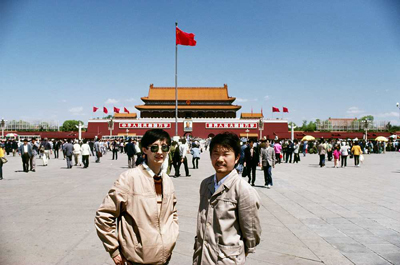 Two local students pose in front of the Forbidden City.
Two local students pose in front of the Forbidden City.
This tide of positivity crested on the thrilling day in May when more than a million protesters filled Tiananmen Square as Mikhail Gorbachev gave a speech in the Great Hall of The People. This ocean of humanity radiated good will and confidence. A student protester gave me a banner with large Mandarin characters spray-painted on it and his name written in magic marker.
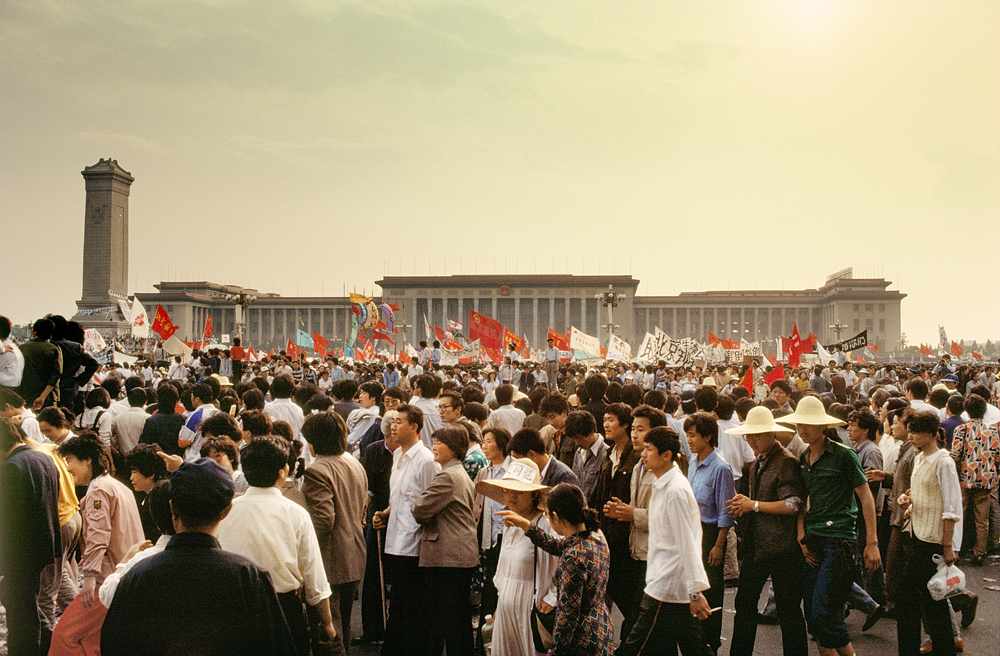 More than one million protesters surround the Great Hall of the People in Tiananmen Square.
More than one million protesters surround the Great Hall of the People in Tiananmen Square.
As I left Beijing to continue my tour of China by train and bus, I met a number of students who had come to the capital to join the protests and were now returning home. Everyone shared the conviction that the students had scored a historic ideological victory and that the government had shown admirable leadership by not overreacting.
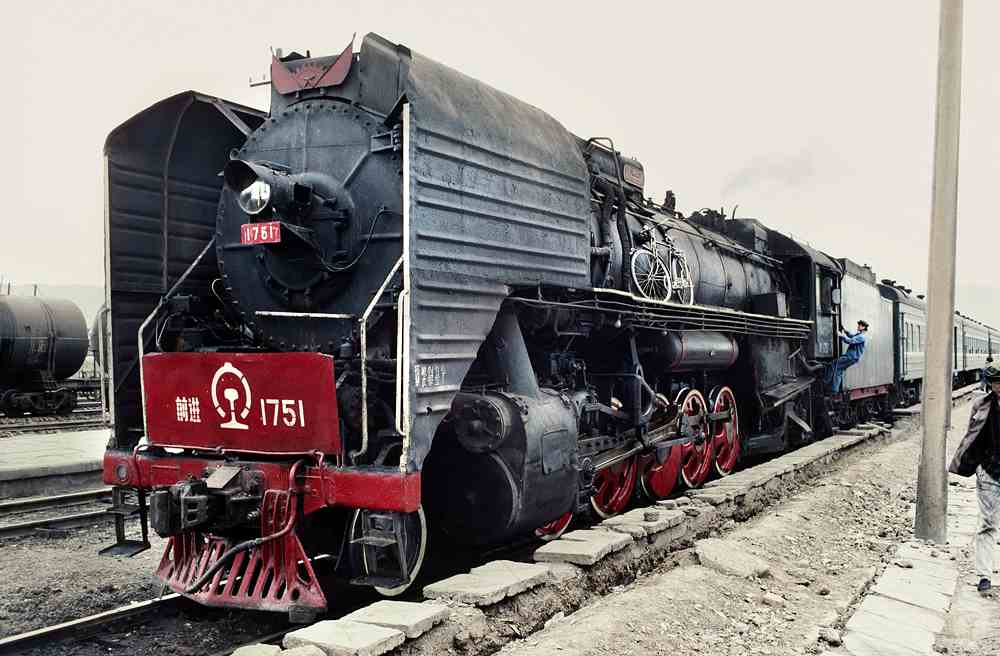 A contemporary steam engine was put to work on a three-day trip across China.
A contemporary steam engine was put to work on a three-day trip across China.
Reports of the violent crackdown in Beijing reached me on June 3rd as I sped through the night on a train a thousand miles southwest of the Chinese capital. The message from the government was loud, clear and meant to intimidate. The stunned silence that overtook the train echoed the fact that the Chinese on board had gotten the message. No doubt many of them were now anxious and frightened. I wasn't scared at the time, but fear would find me soon enough.
For the next three weeks, my time in China became increasingly tense and fearful. The friendly crowds I had encountered before the crackdown had vanished. Locals were no longer interested in practicing their English or sharing snacks. No adults wanted to have their picture taken. Only young children and precocious teens still wanted to face my camera.
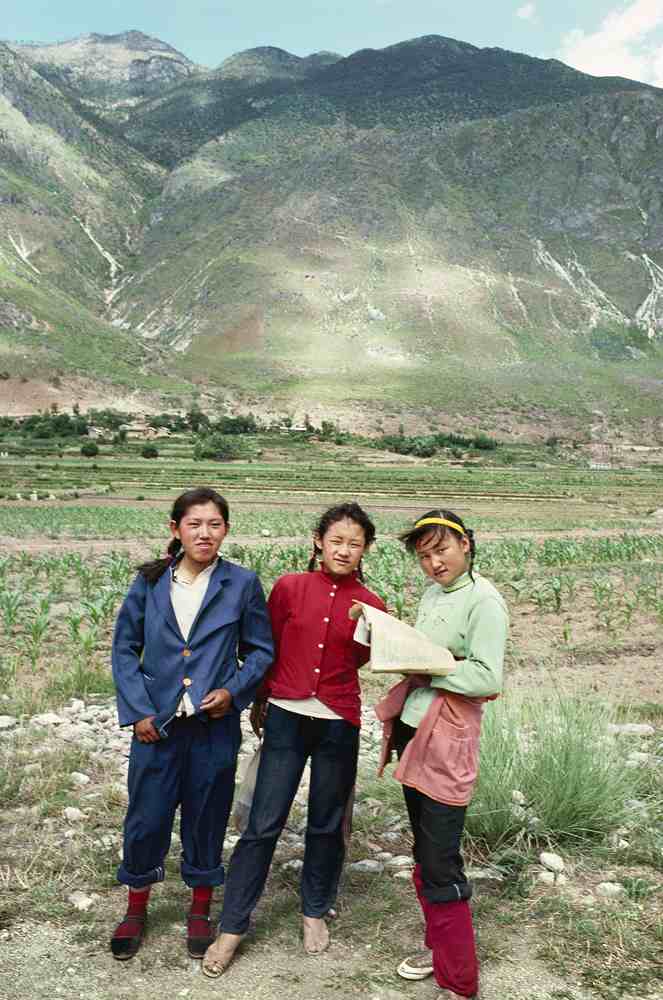 Three young women pose in Yunnan Province near the Tibetan border.
Three young women pose in Yunnan Province near the Tibetan border.
The curious students and workers from the earlier stages of my journey were replaced with a growing array of police and security officials. Every local official I encountered wanted to know where I had come from and where I was going. Fortunately, no one searched my backpack and discovered the banner I had been given by the student protesters in Tiananmen Square.
Government repression rapidly spread throughout China from large cities to remote hamlets. While China has undergone tremendous change over the past 20 years, the June Fourth Incident, as the 1989 crackdown is often called, remains heavily censored. By the time I left China in the middle of June twenty years ago, I was the only foreign visitor to be found in one of the countries most popular tourist regions. The Li River, usually choked with boats full of tourists, flowed with stifling serenity.
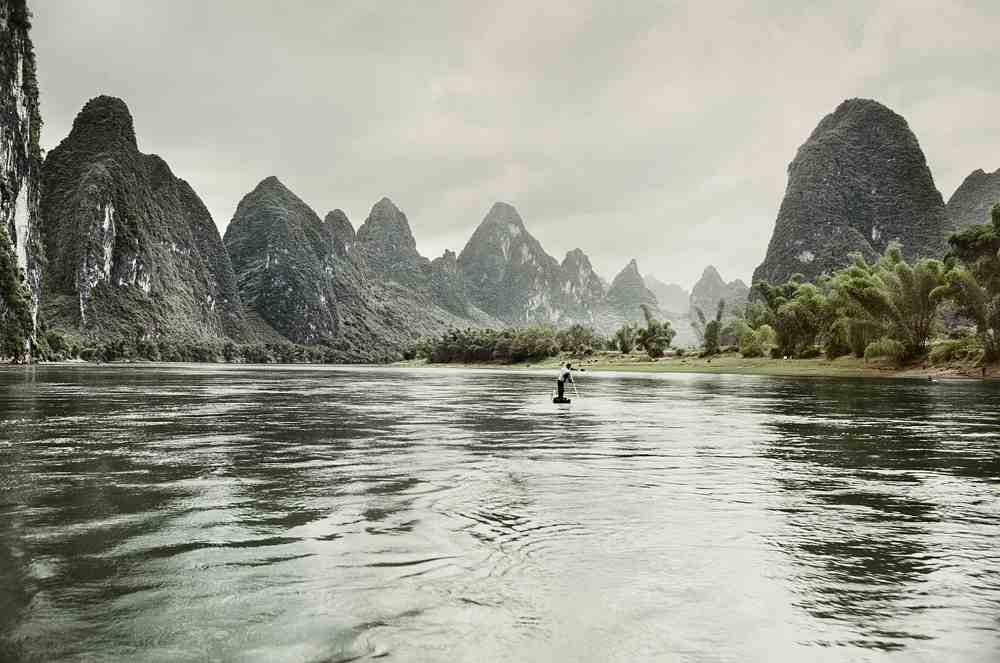 A solitary raft plies the Li River in the Guilin-Yangshuo area of southern China.
A solitary raft plies the Li River in the Guilin-Yangshuo area of southern China.
Joe Merlino received a B.A. from Harvard University where he studied economics, history and anthropology and played on the varsity soccer team. In 1997, Joe started his own consulting firm, Purpose Networks, specializing in strategic advisory services for corporations and nonprofit organizations. He has worked with clients in diverse areas including human rights, renewable energy, asset management, climate change, consumer products, conservation, media and poverty relief. Joe lives in Santa Fe, New Mexico with his wife, Alexandra, and their daughter, Helena.
All photographs copyright 2009 Joseph Merlino. All rights reserved.